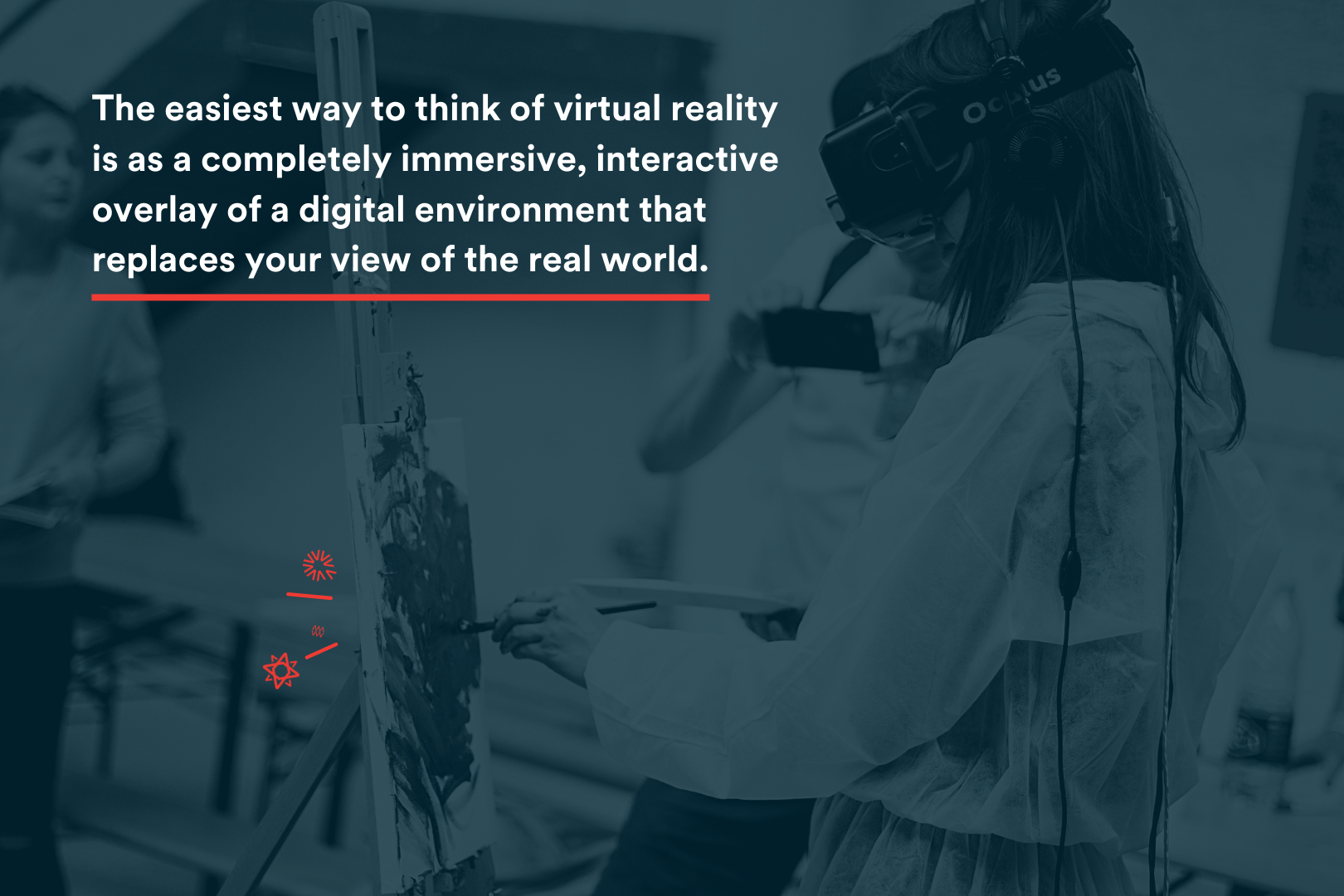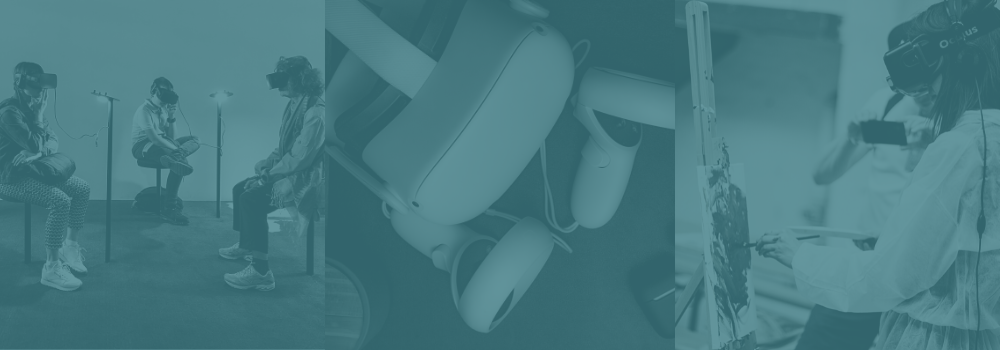Internet of Things | augmented reality | virtual reality
Is 2022 the year virtual reality finally takes off in the mainstream?
Some of the biggest companies in the world certainly hope so. Facebook recently declared its intention to go all-in on virtual reality with a media distraction campaign/name change to Meta, a moniker meant to evoke the concept of the metaverse, where people congregate and interact in virtual reality environments.
Virtual reality headsets continue to become more affordable to the average consumer, with Facebook/Meta once again leading the charge with its relatively cheap Oculus Quest headset. But they’re far from the only one, with Valve, Microsoft, Sony, and others offering options whose prices continue to decline (even Apple is rumored to be launching a virtual reality headset in 2022).
Virtual reality is here, and it’s more mainstream than ever. And it’s not just computer games and travel apps. Companies are coming up with inventive and innovative ways to draw in consumers and conduct business in VR.
Is your own company ready for the leap? It helps to start by making sure you know exactly what virtual reality is, what it isn’t, and a few examples of this technology in play today.
Virtual Reality Meaning
The easiest way to think of virtual reality is as a completely immersive, interactive overlay of a digital environment that replaces your view of the real world.
Now, this definition is not without controversy. Is a movie you watch in virtual reality actually virtual reality, seeing as how you can’t interact with it? Technically, yes. The reason is because, while you may not affect the movie itself, you can turn your head to see the world around you, typically a virtual reality movie theater where you sit in a digital seat just like you would in the real world.
Other non-interactive experiences take things even further, using 360-degree cameras to enable you to turn your head in any direction to see a movie playing out all around you.
Although this may not seem interactive, that turning of your head is itself an interaction. True, you’re not using hand-based controls to affect the environment, but looking around is enough to change the interplay between you and the 3D environment in a way that’s not possible in two-dimensional media.
More commonly, virtual reality is understood as a fully interactive environment you can actually walk around and affect in more direct ways. This is accomplished via a headset that lets you see in all directions and, as is most common in modern virtual reality products, two grips (one for each hand), that often look like modified videogame controllers but function as an extension of your own hands within the virtual environment.

With such a setup, you can access and interact with virtually any virtual environment. You can walk around (via pointing to where you’d like to go, using a joystick, or by actually walking — depending on the size of your physical space). You can pick up, examine, and use any number of items depicted in that environment. And you can even interact with others, either fully computer-generated creations or avatars of others who also exist within the same digital environment.
One thing virtual reality is not? Augmented reality. Augmented reality produces a digital overlay to your actual physical environment. Virtual reality eclipses that physical environment completely. So there is a genuine difference between the two.
Virtual Reality Examples
The most common examples of virtual reality are videogame-based.
This makes sense. Companies have been building digital 2D environments for decades, so those same companies have a distinct advantage in crafting 3D environments, and they’re going to play to their strengths.
Indeed, some people use their virtual reality headset as nothing more than a videogame system. First-person shooters are common, as are other genres where your view is the view of your avatar character. Still other companies have gotten creative and divorced the player view from the avatar view, with third-person views that can take some getting used to but provide a unique spin on virtual environments.
Other examples include spaces for engaging with non-interactive environments, which we mentioned briefly above. These are movies built from the ground-up to allow you to look anywhere, or they could be 2D movies you view in a movie theater (a common trope of virtual reality videogames is to move your view from your first-person avatar to a movie theater to view non-interactive cutscenes).
But perhaps the most exciting examples of VR are those that have nothing to do with videogames or traditional movie experiences. VR can enable you to interact with people from across the globe in fully digital environments. You can chat, play games, even host meetings with your coworkers scattered around the world. In these environments, you’re not limited to a physical office space. The space around you can look like anything, and you and your cohorts can also look like anyone or anything.
This is the arena in which Facebook/Meta firmly planted its flag. Rather than just being the world’s leading social media outlet, the company wants to produce and support a second virtual world where anything is possible.
But you don’t need such lofty ambitions to spark innovation in virtual reality.
Innovators Across Industries
Although less heralded than videogames and other splashy virtual reality programs, many industry-specific virtual environments are making a difference and increasing their market share.
-
Education
Virtual reality lets you experience the things you’d previously have taken notes on. Imagine a med school where budding doctors can practice surgical procedures or various check-ups in a virtual environment, seeing the patient as he or she would actually appear in the real world. Or an elementary school where kids can see the places they’re learning about in geography class.
-
Military
As remotely piloted aircraft and virtual reality become more advanced, it will become possible to pilot vehicles in a completely virtual environment where every digital representation of a piece of equipment matches up 1:1 with its physical counterpart.
-
The Arts
Live performances in virtual environments are becoming more and more common, especially since the pandemic. Bands and performers of all kinds are hosting shows around the world, playing to audiences of thousands all congregating together digitally to witness something truly special.
-
Retail and Hospitality
Sellers are increasingly ditching the physical store entirely and making their wares available online and in virtual environments. Right now, it’s possible to shop specific brands in a virtual storefront where you can pick products you like and have them delivered directly to your home.
Across these and every industry, training in virtual reality is also becoming more and more common for cost-savings, safety, and meeting the preferences of a younger generation that’s come of age with social media, smart devices and, you guessed it, virtual reality.
The Virtues of Virtual
Virtual reality is here, and it’s transforming how organizations operate. Do you have an idea to bring your business into the virtual space, or a creative way to enable current virtual reality applications to support your strategic goals? If so, let’s talk. Aviture has the virtual reality experience to help turn that vision into a reality, helping you innovate in spaces that would have once seemed impossible.





